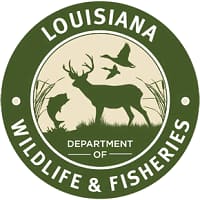Louisiana WFC Sets 2014 Spring Shrimp Season

The dates for the 2014 Louisiana spring shrimp season were set today at the Louisiana Wildlife and Fisheries Commission based on information provided by Louisiana Department of Wildlife and Fisheries biologists and on public comments.
LDWF provided projections of the dates when a minimum of 50 percent of the inshore brown shrimp population would reach 100 count per pound or larger.
The opening dates for the 2014 Louisiana shrimp season are as follows:
1. Monday, May 26, 6 a.m. – The portion of state inside waters from the eastern shore of South Pass of the Mississippi River westward to the western shore of Freshwater Bayou Canal, and the portion of state outside waters extending three nautical miles seaward from the shoreline from the Atchafalaya River Ship Channel at Eugene Island as delineated by the Channel red buoy line westward to the to the western shore of Freshwater Bayou Canal at -92 degrees 18 minutes 33 seconds west longitude.
2. Monday, June 2, 6 a.m. – The portion of state inside waters from the Mississippi/Louisiana state line westward to the eastern shore of South Pass of the Mississippi River to open at 6 a.m. June 2. However, the open waters of Breton and Chandeleur Sounds as described by the double-rig line are currently open to shrimping.
3. Monday, June 2, 6 a.m. – The portion of state inside waters from the western shore of Freshwater Bayou Canal westward to the Louisiana/Texas state line.
State Outside Waters
In addition to the open waters of Breton and Chandeleur Sounds, all state outside waters are currently open to shrimping except for outside waters extending three nautical miles seaward from the shoreline from the Atchafalaya River Ship Channel at Eugene Island westward to the to the western shore of Freshwater Bayou Canal.
The Commission granted authority to LDWF Secretary Robert Barham to delay or advance these opening dates if biological and technical data indicate the need to do so, and; to close any portion of Louisiana’s inside waters to protect small juvenile white shrimp if biological and technical data indicate the need to do so, or enforcement problems develop. The Secretary is further granted the authority to open any area, or re-open any previously closed area, and to open and close special shrimp seasons in any portion of state waters.
For a map detailing these openings please click here.

